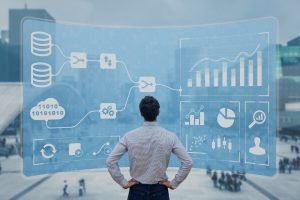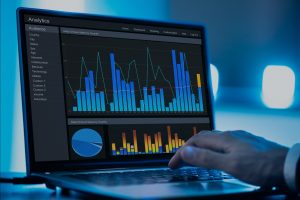
Evidence-Based Storytelling and Visual Analytics
Stories have been humanity’s primary mode of communicating for generations. Stories have been used to relay messages, overt and covert, knowledge, and culture too. Clearly, the purpose of a story is to disseminate information.
That is precisely why stories are so important in this era of big data. Not made-up stories though; stories based on evidence. Data is collected in enormous volumes, of various types, and at blazing speeds, that too at every moment in time. Once consolidated and organized, meaningful information derived from this data can be distributed through stories. Given how much data is out there, the sheer number of stories that are waiting to be told is unfathomable.
But what good could these stories do? They help make sense of raw data. Businesses, governments and non-profits all rely on data to make decisions. Businesses can figure out what their customers want, governments can determine what policies are working and non-profits can spot new issues to address. That is just the tip of the iceberg: data can be used in a host of different applications to benefit everyone. The problem lies in our cognitive abilities which work much better with stories instead of raw data. Stories therefore help us make sense of the past and pave the way for us to better deal with the future.
 Visual Analytics refers to the use of interactive visual interfaces for the purpose of analytical reasoning. This helps in not only communicating and explaining known ideas, but also in analyzing and discovering new ideas which eventually help people evaluate choices and make decisions.
Visual Analytics refers to the use of interactive visual interfaces for the purpose of analytical reasoning. This helps in not only communicating and explaining known ideas, but also in analyzing and discovering new ideas which eventually help people evaluate choices and make decisions.
Consider a table full of sales data of a chain superstore, including the products, quantities, time, date, location and method of payment of every transaction. Now, consider a simple bar chart that shows how much of each product was sold. Or a pie chart showing which method of payment was used more. The bar chart and pie chart are definitely simpler to understand and easier to work it as opposed to the endless entries on the table of sales data.
The human mind’s ability to process data is limited by its working memory. The working memory isn’t very large and can only process small to moderate volumes of data. As such, simplifying data sets into more manageable chunks and manipulating them into more sensible forms are essential for effective analysis. The human mind is inherently good at interpreting graphs and patterns. Thus most of the visual analytics tools include graphs and charts.
 Dashboards are common data visualization tools in the business world. Such software incorporates data from various sources and displays multiple visual components in customizable layouts. These visual components not only include graphs, but also area and line charts, pie charts, dot plots, pivots, and even interactive graphs. However, a storyteller is almost always needed to weave the whole story together, using all the different components.
Dashboards are common data visualization tools in the business world. Such software incorporates data from various sources and displays multiple visual components in customizable layouts. These visual components not only include graphs, but also area and line charts, pie charts, dot plots, pivots, and even interactive graphs. However, a storyteller is almost always needed to weave the whole story together, using all the different components.
Softograph is observing how evidence-based stories have begun to change how businesses and entire governments run. By creating these stories from data, all these entities have been able to spot trends and create predictive models which in turn have helped them make much better decisions.